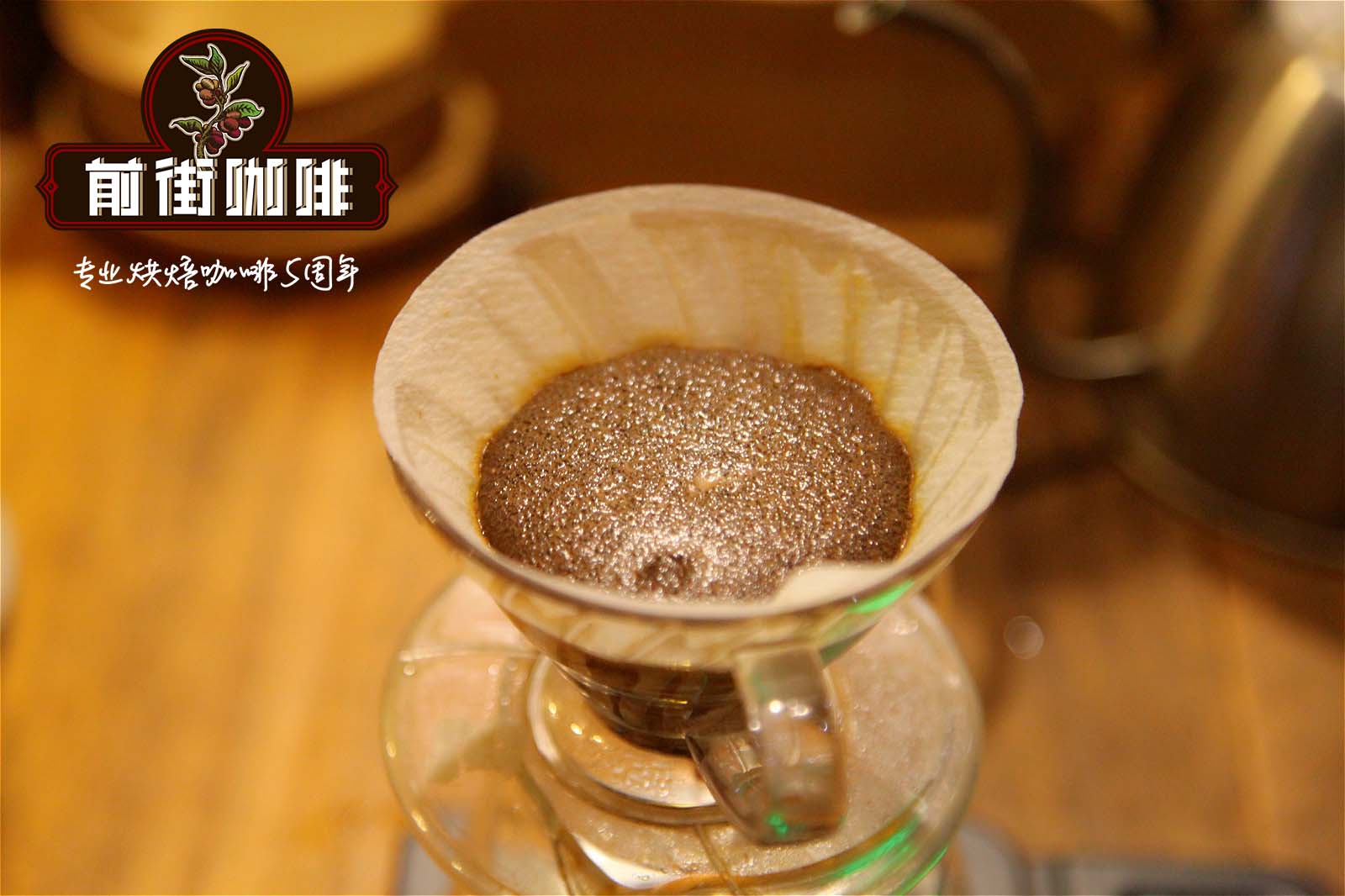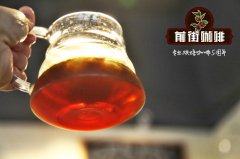How do I drink Hawaiian Kona coffee? Hawaiian Kona Coffee Brewing course sharing

Professional coffee knowledge exchange More coffee bean information Please pay attention to coffee workshop (Weixin Official Accounts cafe_style)
The unique growth and climate conditions create the perfect flavor of Hawaiian Kona coffee: Hawaiian beach, monsoon and volcanic flavors.
Hawaiian Kona coffee beans are the most beautiful coffee beans in the world. They are unusually full and shiny. Kona coffee beans are evenly shaped, with intense acidity and sweetness. They taste moist and smooth. Growing on a volcano, Hawaii's unique volcanic climate creates Kona coffee's unique aroma, and there is a high density of artificial cultivation, so each bean can be said to be spoiled "ladylike", beautiful, plump and baby-like skin.
Kona coffee tastes fresh, crisp, medium-bodied, slightly sour, with a rich aroma and a long finish. Best of all, Kona coffee has a blend of wine, fruit and spice aromas that are as charming as the colorful hues of this volcanic archipelago. The taste of Kona coffee generally falls into the milder category, so that some people think this mildness is synonymous with bland, and Kona is too refreshing and simple. But if you're one of those people who wants to get into the mood with the aroma of coffee before you taste it, Kona coffee is the coffee for you, because it's not as mellow as Indonesian coffee, not as strong as African coffee, not as rough as Central and South American coffee. Kona coffee is like a girl walking in the Hawaiian sun breeze, fresh and natural, not warm.
Taste of Hawaii
In Hawaii, you can watch the blazing sunset sink into the red-orange sea, feel the fresh, floral air, and sit on the beach with a cup of Kona coffee. I'm afraid there's no place in the world that can offer you such enjoyment.
Hawaii's earliest settlers arrived in 300 - 400 AD, and historians speculate that they came from the Marquesas Islands. The people lived on the island in separate tribes led by hereditary chiefs. The earliest Hawaiian inhabitants created Hawaii's rich musical culture, although not much writing survives.
The Europeans discovered Hawaii by accident. They were originally looking for a legendary passage to the east to produce spices, but instead they found the richest pearl in the Pacific Ocean. A captain named James Cook landed at Kauai in 1778 to supply his ships. He encountered severe cold and storms on his way back, and had to return to Hawaii early the following year and anchor on a beach in Kona. Since then, the Hawaiian Islands have become important stopovers on the world trade routes. Hawaii's chiefs traded sandalwood, a native of the island, for weapons, goods and livestock with passing ships. From the 1820s, Western religion began to spread widely on the island, and many churches built in that era are still in use today.
Hawaii tourism is developed, visitors can visit coffee farms, see or hands-on coffee harvest, coffee beans processing, roasting and grinding and other processes, and make a cup of coffee that really belongs to themselves. There are about 600 independent coffee farms in the Kona area, most of which are small family farms, usually between 18 and 42 acres. Kona coffee can bring in more than $10 million a year to these coffee farms.
Kona coffee has always been grown using the family farming model. At first, only men were allowed to work in the coffee garden, but later women joined in. Hawaiian family production was more dependent on family effort than on hiring workers, so it was normal for Hawaiian families to have eight or nine children. Since then, new immigrants from the Philippines, the United States and Europe have come to Hawaii to engage in coffee farming. Over time, Hawaii has formed a social atmosphere centered on family culture and easy to absorb foreign culture, which has become a major feature of Hawaii.
Hawaii is also a paradise for coffee tasting and buying. Each island has several unique places for tourists and locals to taste and buy coffee, ranging from cozy shops to comprehensive coffee knowledge centers. In Hawaii, you can watch the blazing sunset sink into the red-orange sea, feel the fresh air filled with flowers, and sit on the beach with a cup of fragrant coffee. I'm afraid there's no place in the world that can offer you such enjoyment.
Noble and ancient blood.
Real Hawaiian Kona coffee gives you a unique pleasure and leads you slowly into the transcendent state of coffee tasting. And this is all from the oldest Arabica coffee tree.
Hawaii is the only state in the United States to grow coffee, which is grown on the five main islands of the Hawaiian archipelago: Oahu, Hawaii, Maui, Kauai and Mauroka. Coffee produced on different islands also has its own characteristics. Coffee from Kauai is soft and smooth, coffee from Mauroka is high in alcohol and low in acidity, and coffee from Maui is medium in acidity but has the strongest flavor. Hawaiians are proud of their 100% indigenous Arabica coffee beans.
Hawaii is the largest island in the Hawaiian Islands, so it is also called the Big Island. Kona coffee is grown in the west and south of Kona area of Hawaii Island. Coffee trees are spread all over the slopes of Hualalai and Mauna Loa, which are 150 meters to 750 meters above sea level, which is suitable for coffee growth.
The excellent quality of Kona coffee is due to its location and climate. Coffee trees grow on the slopes of volcanoes, and their geographical location ensures the altitude required for coffee growth; the dark volcanic ash soil provides the minerals needed for coffee growth; the climatic conditions are very suitable, and the sun gently passes through the air filled with moisture in the morning. In the afternoon, the mountains become more humid and foggy, and the clouds in the air are natural umbrellas for coffee trees. At night, they become clear and cool, but there is no frost. Natural conditions have allowed the average yield of Kona coffee to be very high, reaching 2240 kilograms per hectare, compared with 600 to 900 kilograms per hectare in Latin America.
In 1813, a Spaniard first planted coffee in Oahu's Manoa Valley, which today is the main campus of the University of Hawaii. In 1825, an English agriculturist named John Wilkinson transplanted coffee seeds from Brazil to the coffee plantation of Chief Birch on Oahu. Three years later, an American missionary named Samuel Reverend Ruggles brought branches from Chief Birch's coffee tree to Kona. The coffee is a descendant of the Arabica coffee tree originally grown in the Ethiopian highlands, and Kona coffee continues its noble and ancient lineage to this day.
Hawaii's earliest coffee plantations followed the model of large-scale coffee plantations, and at a time when coffee was not a widely grown crop worldwide, Kona coffee production and sales fluctuated. After the outbreak of World War I, demand for coffee increased dramatically, and the government bought coffee in large quantities for soldiers to keep them fit. The increase in demand triggered a price hike, and Kona coffee was no exception. The period between the outbreak of World War I and 1928 was the golden age of Kona coffee. But the Great Depression that followed dealt Kona another blow. In 1940, World War II drove coffee prices up again, and the U.S. government set a price cap to prevent excessive price increases. Even so, coffee farmers in Hawaii benefited a lot. Their transportation mode of transporting coffee fruits changed from donkeys to jeeps during this period.
In the 1970s and 1980s, Kona coffee prices went through several ups and downs, but it was during this period that Kona coffee established itself as the world's top coffee. Even though Kona coffee has become world-famous, its production remains relatively low.
Kona coffee has been grown in Kona since the early 19th century and has never been discontinued, and only here can coffee be called "Hawaiian Kona." Hawaiian Kona Coffee's green beans are usually 100 packs of single-serve coffee beans. Kona coffee beans are also often mixed with coffee beans grown elsewhere in the world to make coffee blends. Kona coffee beans mixed with other beans will be labeled "Kona Blend" on the package. Unfortunately, the content of kona in this blend can be very low. The minimum content of kona in Hawaii that can be labeled "Kona" is only 10%. So if you're not in Kona, Hawaii, it's hard to have 100 percent pure Kona coffee beans.
KONA is produced on Hawaii Island, the largest island in Hawaii. It is located in KONA area on the west slope of Mauna Kea Mountain at 4200 Michael. The climate of tropical rain forest is quite rich in annual rainfall. Coffee trees are planted on black gravel of broken volcanic rocks. The local natural environment is quite suitable for coffee beans cultivation. Therefore, high quality coffee is cultivated.
KONA has a low yield and a small and sophisticated factory that produces high quality green beans at a reasonable price, second only to Jamaica Blue Mountain Coffee.
Consumers who have traveled to Hawaii must know that KONA coffee is not cheap to buy in Hawaii's tourist areas, and many are simply KONA blends (KONA beans are only a fraction of %).
Aroma: Red wine color with citrus and dried fruit aromas, vanilla plant aromas, and sugar aromas
The acidity on the palate gives a fresh, bright finish with citrus fruit notes.
※ |Kona Coffee Brewing Analysis
1. Filter cup: V60
2. Water temperature: 92 degrees
3. Abrasion: Small Fuji Abrasion 3.5
4. Degree of roasting: medium roasting
5. Steaming time: 30 seconds
Flavor: Malt, mulberry, lingering caramel sweetness
Front Street Coffee suggested technique: slow and stable continuous water injection: fine water flow around the circle, gently inject water to make it evenly extracted, very slowly, can also be appropriately stirred with a stirring rod, usually in the stewing stage, a cross stirring, so that the moisture fully contacts the coffee powder, increase the release of aromatic substances.
Qianjie Coffee: Guangzhou's baking shop, small store but a variety of beans, can find a variety of famous beans, but also provide online store services. https://shop104210103.taobao.com
Important Notice :
前街咖啡 FrontStreet Coffee has moved to new addredd:
FrontStreet Coffee Address: 315,Donghua East Road,GuangZhou
Tel:020 38364473
- Prev

How to identify the authenticity of Hawaiian kona coffee why Hawaiian Kona coffee is so expensive
Professional coffee knowledge exchange more coffee bean information please follow the coffee workshop (Wechat official account cafe_style) Hawaiian Coffee Real labeling introduction Hawaiian Coffee labeling Q & A, let's see how they are responsible for producers and consumers. It has already happened in Hawaii that imported beans are mixed with beans of origin. After what happened, their opposition
- Next

The reason why Hawaiian Kona coffee is expensive how to make and drink Hawaiian Kona coffee?
Professional coffee knowledge exchange more coffee bean information please follow the coffee workshop (Wechat official account cafe_style) Kona coffee why is so expensive? Across latitudes 19 to 22 degrees, south of the Tropic of Cancer, the Hawaiian archipelago, blown by trade winds, is a perfect coffee growing area. In the volcanic soil and tropical climate, supplemented by slight humidity, regular afternoons
Related
- Does Rose Summer choose Blue, Green or Red? Detailed explanation of Rose Summer Coffee plots and Classification in Panamanian Jade Manor
- What is the difference between the origin, producing area, processing plant, cooperative and manor of coffee beans?
- How fine does the espresso powder fit? how to grind the espresso?
- Sca coffee roasting degree color card coffee roasting degree 8 roasting color values what do you mean?
- The practice of lattes: how to make lattes at home
- Introduction to Indonesian Fine Coffee beans-- Java Coffee producing area of Indonesian Arabica Coffee
- How much will the flavor of light and medium roasted rose summer be expressed? What baking level is rose summer suitable for?
- Introduction to the characteristics of washing, sun-drying or wet-planing coffee commonly used in Mantenin, Indonesia
- Price characteristics of Arabica Coffee Bean Starbucks introduction to Manning Coffee Bean Taste producing area Variety Manor
- What is the authentic Yega flavor? What are the flavor characteristics of the really excellent Yejasuffi coffee beans?

